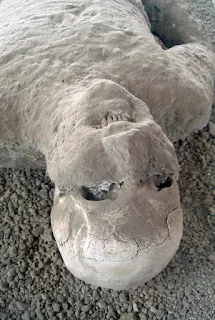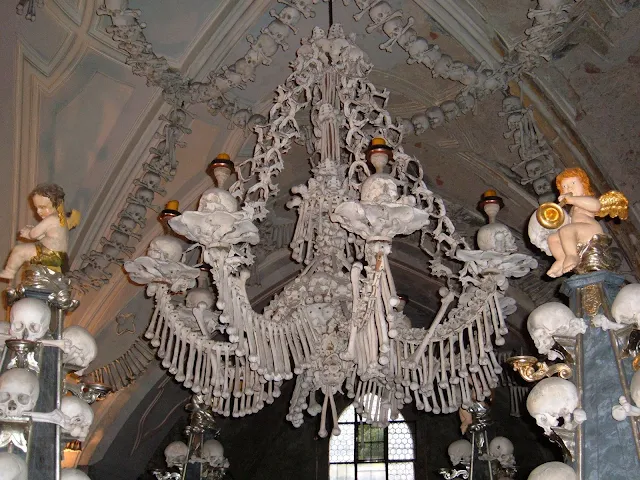Pompeii was an ancient Roman town-city near modern Naples, in the Campania region of Italy, in the territory of the comune of Pompei. Pompeii, along with Herculaneum and many villas in the surrounding area, was mostly destroyed and buried under 4 to 6 m (13 to 20 ft) of volcanic ash and pumice in the eruption of Mount Vesuvius in 79 AD.
Researchers believe that the town was founded in the seventh or sixth century BC by the Osci or Oscans. It came under the domination of Rome in the 4th century BC, and was conquered and became a Roman colony in 80 BC after it joined an unsuccessful rebellion against the Roman Republic. By the time of its destruction, 160 years later, its population was estimated at 11,000 people, and the city had a complex water system, an amphitheater, gymnasium, and a port.
The eruption destroyed the city, killing its inhabitants and burying it under tons of ash. Evidence for the destruction originally came from a surviving letter by Pliny the Younger, who saw the eruption from a distance and described the death of his uncle Pliny the Elder, an admiral of the Roman fleet, who tried to rescue citizens. The site was lost for about 1,500 years until its initial rediscovery in 1599 and broader rediscovery almost 150 years later by Spanish engineer Rocque Joaquin de Alcubierre in 1748. The objects that lay beneath the city have been preserved for more than a millennium because of the lack of air and moisture. These artifacts provide an extraordinarily detailed insight into the life of a city during the Pax Romana. During the excavation, plaster was used to fill in the voids in the ash layers that once held human bodies. This allowed archaeologists to see the exact position the person was in when he or she died. Pompeii has been a tourist destination for over 250 years. Today it has UNESCO World Heritage Site status and is one of the most popular tourist attractions in Italy, with approximately 2.5 million visitors every year.

After thick layers of ash covered Pompeii and Herculaneum, they were abandoned and eventually their names and locations were forgotten. The first time any part of them was unearthed was in 1599, when the digging of an underground channel to divert the river Sarno ran into ancient walls covered with paintings and inscriptions. The architect Domenico Fontana was called in; he unearthed a few more frescoes, then covered them over again, and nothing more came of the discovery. A wall inscription had mentioned a decurio Pompeii ("the town Councillor of Pompeii") but its reference to the long-forgotten Roman city was missed.
Fontana's covering over the paintings has been seen both as a broad-minded act of preservation for later times, and as censorship in view of the frequent sexual content of such paintings, as he would have known that paintings of the hedonistic kind later found in some Pompeian villas were not considered in good taste in the climate of the counter-reformation.
Herculaneum was properly rediscovered in 1738 by workmen digging for the foundations of a summer palace for the King of Naples, Charles of Bourbon. Pompeii was rediscovered as the result of intentional excavations in 1748 by the Spanish military engineer Rocque Joaquin de Alcubierre. These towns have since been excavated to reveal many intact buildings and wall paintings. Charles of Bourbon took great interest in the findings even after becoming king of Spain because the display of antiquities reinforced the political and cultural power of Naples.
Karl Weber directed the first real excavations; he was followed in 1764 by military engineer Franscisco la Vega. Franscisco la Vega was succeeded by his brother, Pietro, in 1804. During the French occupation Pietro worked with Christophe Saliceti.
Giuseppe Fiorelli took charge of the excavations in 1863. During early excavations of the site, occasional voids in the ash layer had been found that contained human remains. It was Fiorelli who realized these were spaces left by the decomposed bodies and so devised the technique of injecting plaster into them to recreate the forms of Vesuvius's victims. This technique is still in use today, with a clear resin now used instead of plaster because it is more durable, and does not destroy the bones, allowing further analysis.
The discovery of erotic art in Pompeii and Herculaneum left the archaeologists with a dilemma – between the mores of sexuality in ancient Rome and in Counter-Reformation Europe lay a clash of cultures. An unknown number of discoveries were hidden away again. A wall fresco depicting Priapus, the ancient god of sex and fertility, with his extremely enlarged penis, was covered with plaster. An older reproduction was locked away "out of prudishness" and opened only on request—and only rediscovered in 1998 due to rainfall.
A large number of artifacts from the buried cities are preserved in the Naples National Archaeological Museum. In 1819, when King Francis visited the Pompeii exhibition there with his wife and daughter, he was so embarrassed by the erotic artwork that he decided to have it locked away in a so-called "secret cabinet" (gabinetto segreto), a gallery within the museum accessible only to "people of mature age and respected morals". Re-opened, closed, re-opened again and then closed again for nearly 100 years, the Naples "Secret Museum" was briefly made accessible again at the end of the 1960s (the time of the sexual revolution) and was finally re-opened for viewing in 2000. Minors are still allowed entry only in the presence of a guardian or with written permission.
Pompeii has been a popular tourist destination for over 250 years; it was on the Grand Tour. By 2008, it was attracting almost 2.6 million visitors per year, making it one of the most popular tourist sites in Italy. It is part of a larger Vesuvius National Park and was declared a World Heritage Site by UNESCO in 1997. To combat problems associated with tourism, the governing body for Pompeii, the Soprintendenza Archaeological di Pompei have begun issuing new tickets that allow for tourists to also visit cities such as Herculaneum and Stabiae as well as the Villa Poppaea, to encourage visitors to see these sites and reduce pressure on Pompeii.
Pompeii is also a driving force behind the economy of the nearby town of Pompei. Many residents are employed in the tourism and hospitality business, serving as taxi or bus drivers, waiters or hotel operators. The ruins can be easily reached on foot from the Circumvesuviana train stop called Pompei Scavi, directly at the ancient site. There are also car parks nearby.
Excavations in the site have generally ceased due to the moratorium imposed by the superintendent of the site, Professor Pietro Giovanni Guzzo. Additionally, the site is generally less accessible to tourists, with less than a third of all buildings open in the 1960s being available for public viewing today. Nevertheless, the sections of the ancient city open to the public are extensive, and tourists can spend several days exploring the whole site.
For more details - Pompeii






































































